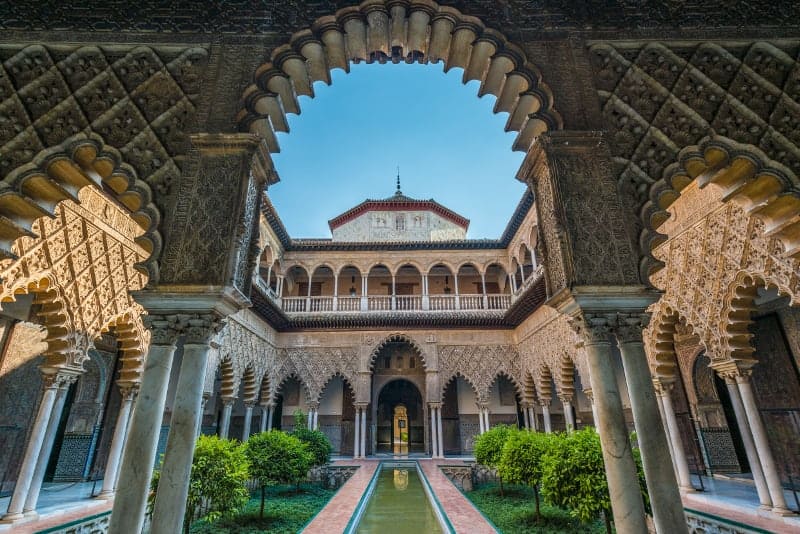 Seville’s Highlight: The Real Alcazar
Seville’s Highlight: The Real Alcazar
The Real Alcazar is Seville’s highlight attraction as well as one of the top three Moorish sites in Spain (I’ll cover the other two at the bottom of this post). It is a UNESCO World Heritage Site, a residence of the Spanish Royal family and was – for Game of Thrones fans – a filming location in the series.
With incredible Islamic architecture, exquisite tilework, and lavish and extensive gardens, it is one of Spain’s “must-see” sights.
All about the Real Alcazar in this post.
Hotel recommendations in Seville: Mid-range: Hotel Fernando III or Hotel Alminar. Budget options: Hotel Goya and For You Hostel Sevilla. If you want to sleep in a palace then Palacio de Villapanés is the place for you.
The History of the Real Alcazar
The Alcazar (the word meaning “fortress palace”) was originally built as a Moorish fort in the year 712 by the first caliph (Muslim ruler) of Andalusia. The fort was demolished and turned into an extensive series of palaces in the 11th century when Seville became the capital of Andalusia. There were a total of twelve palaces which would be the main residences of the caliphs until the recapture of Seville by Christian forces in 1248.
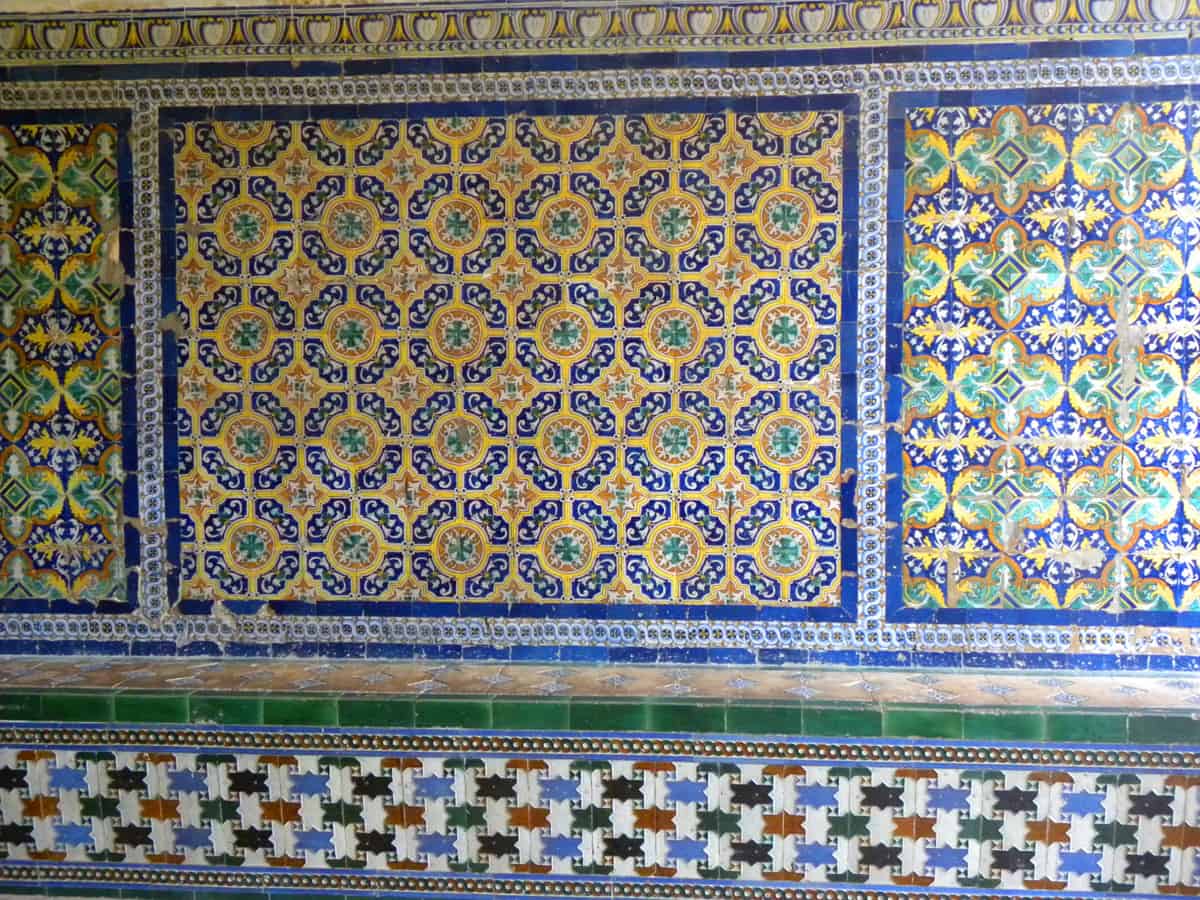
The Christian kings, much like the Moors, made the Alcazar their royal residence but made a lot of changes. It is why the complex today is a mix of Islamic, Renaissance, Gothic, and Baroque elements. Those elements make the Alcazar the finest example of “Mudejar” architecture in the world (Mudéjar is an architectural style built under Christian rule that commingles both Moorish and Spanish Christian elements).
Visiting the Real Alcazar
The entrance to the Alcazar is at the Lion’s Gate (Puerta del Leon) which is a short walk from the Cathedral. I’m telling you this because we approached the Alcazar from the wrong direction and ended up spending over 30 minutes walking around the whole complex.
The Lion’s Gate (Puerta del Leon)
The Lion’s Gate and the walls adjoining it were built by the Moors in the 12th century and led to the garrison yard of the original Al-Muwarak palace. But the gate is named for the 19th century tile-work inlaid above the gate, a crowned lion holding a cross in its claws and bearing a Gothic script.
If you’re entering the Real Alcazar this is where you’ll be lining up to buy your tickets. It’s good to arrive early as the line can be long. It’s even better to pre-purchase tickets to the Real Alcazar.
Recommended Tour: Alcazar Guided Tour with Priority Entrance
Some of the highlights of the Real Alcazar:
The Maiden’s Courtyard (Patio de las Doncellas)
The name “The Courtyard of the Maidens” refers to the legend that the Moors demanded 100 virgins every year as tribute from Christian kingdoms in Iberia.
You’ll see a large, rectangular reflecting pool with sunken gardens on either side. The detail – the arches and tiles – of the courtyard and the reception rooms adjoining the courtyard are exquisite.
The Courtyard was actually built in the 13th Century when Seville was back under Christian rule. It is an architectural monument built in the memory of those 100 virgins which, though fictional, symbolized the psyche of the Christians towards the Moors at the time.
The Ambassador’s Hall
A stunning hall where the most prestigious guests of the Caliphs were received. It was built during the reign of Al-Mu’tamid in the 11th century and then remodelled in the 14th century by Christian king Pedro I of Castile (also called Peter “the Cruel” although some called him Peter “the Just”) to make the hall the centerpiece of his royal palace.
The ceiling, a glittering wood dome gilded by gold and hundreds of tiny mirrors, is incredible. The Hall, open on all sides with beautifully carved arches and embedded with lacework detail, is stunning.
You’ll see a lot of beauty in the Real Alcazar – but I don’t know if anything matches the Ambassador’s Hall. It is mind-blowing and was the absolute highlight of our visit.
Courtyard of the Dolls
Much smaller than the Maiden’s Courtyard is this exquisite courtyard with delicate decorations and columns dating from the time of the Caliphs. The courtyard was a private area of the palace and is reputed to be have been the site of Pedro’s harem.
The Gardens
The Alcazar has vast (60,000 square meters!) gardens with pools, fountains, water basins, and tiled benches. It has trees, shrubs, and flowers of many types and origins. Some were planted from seeds brought back from South America by explorers.
Mercury’s Pool is the first garden you’ll see entering the gardens. It is a large pool and fountain decorated by frescos and stonework and filled with fish. It is also a cistern which supplied the palace with water brought from the nearby town of Carmona. Behind the pool you’ll find the Italian grotto gallery which was constructed using volcanic rocks so that it would look like caves.
Los Baños de Doña María de Padilla
The rainwater tanks beneath the Patio del Crucero are named after María de Padilla, the mistress of Peter the Cruel. She would come down here to bathe, it was a reprieve on a hot summer day (with temperatures about 15C lower to those outside). At the time, the women who came down here were considered prostitutes and the men homosexuals. Today the underground baths are very popular with tourists.
Other
There’s lots more to see in the Real Alcazar that this post can’t cover. But you should allow yourself 3 to 4 hours to explore the whole complex.
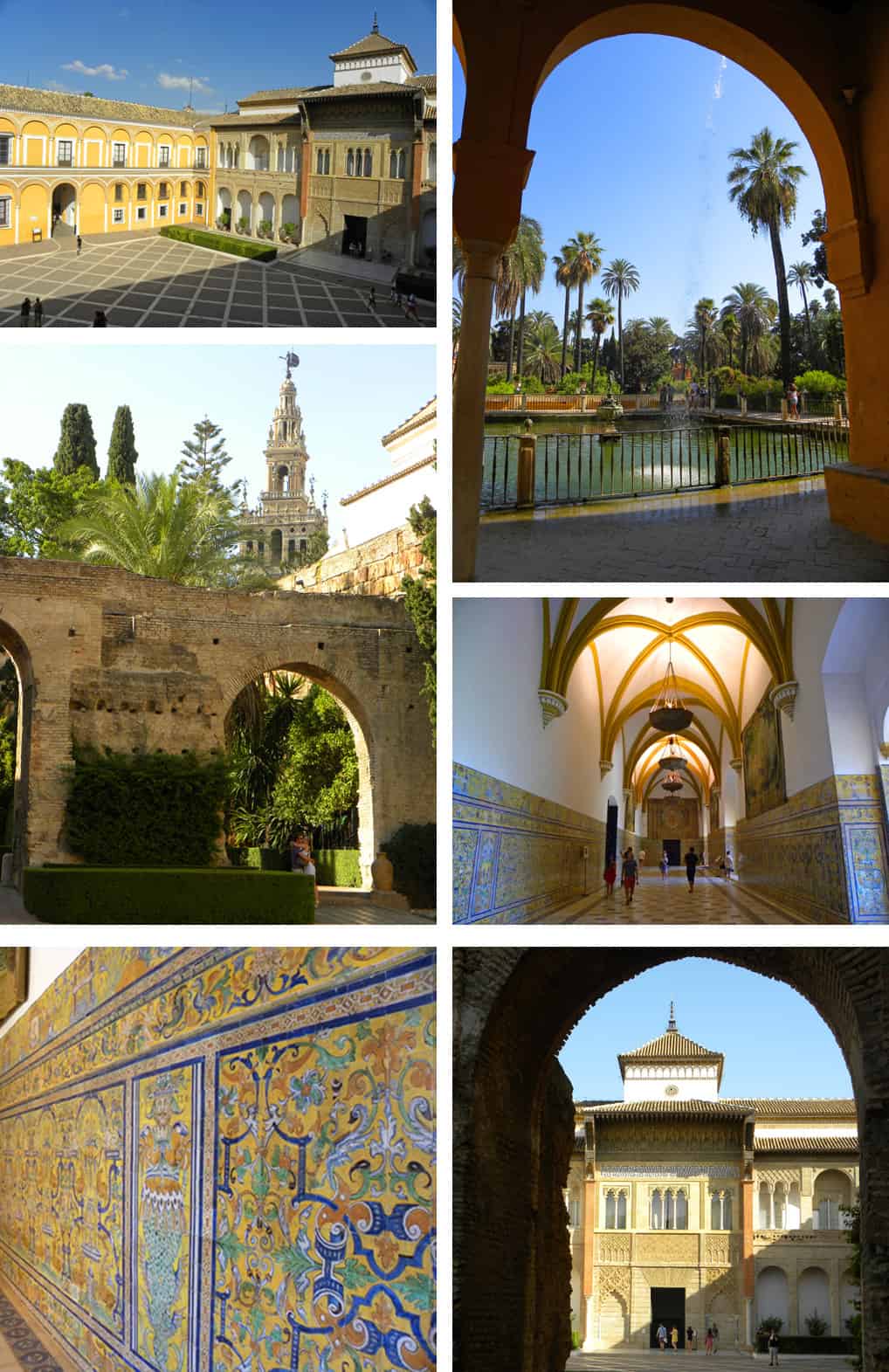
Practical Information
Hours: 9:30 am to 7 pm everyday
The Other 2 Moorish Sites you have to See
I mentioned at the top of this post that there are 3 fantastic Moorish sites in Spain. One is the Real Alcazar. The other two are the Alhambra in Granada and the Mezquita in Cordoba.
More: What you need to know about the Alhambra (Granada)
More: The Mezquita of Cordoba
Related: The Best Moorish Sites in Spain (and our favorite!)
Hotel Recommendations in Seville
Hotel Fernando III (spiffy hotel with pool, great location, nice views. Good value). Hotel Alminar (superb hotel with fantastic location). Budget options: Hotel Goya (nice little place, great location. Fantastic value for money) and For You Hostel Sevilla.
Related: Seville (Spain). What to See – and how to do it on a budget
Related: The 3 best Palaces in Seville (and where you can sleep in a Palace)
Related: 10 Places to visit in Spain other than Barcelona
Ps. If you find our blog helpful, please consider using our links to book your flights, hotels, tours, and car rentals. Have a look at our Travel Resources page.

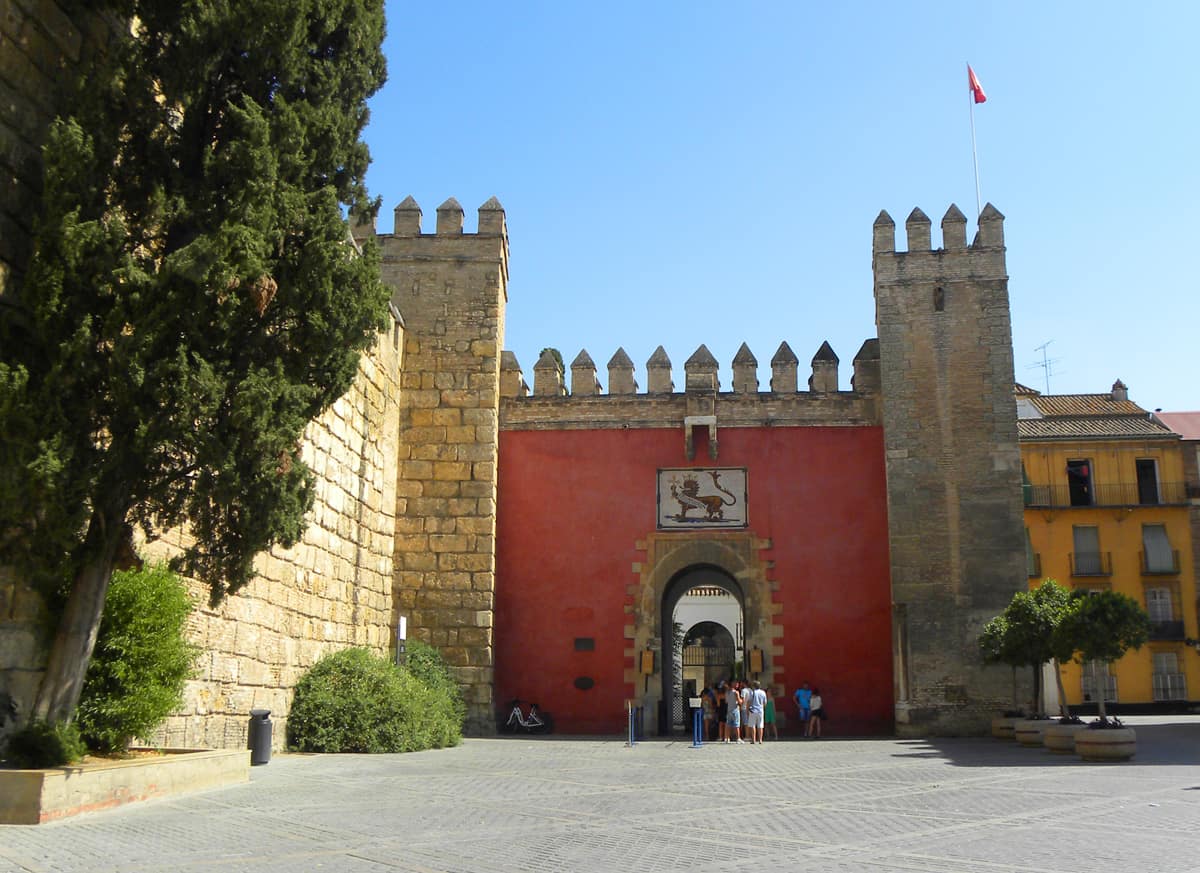
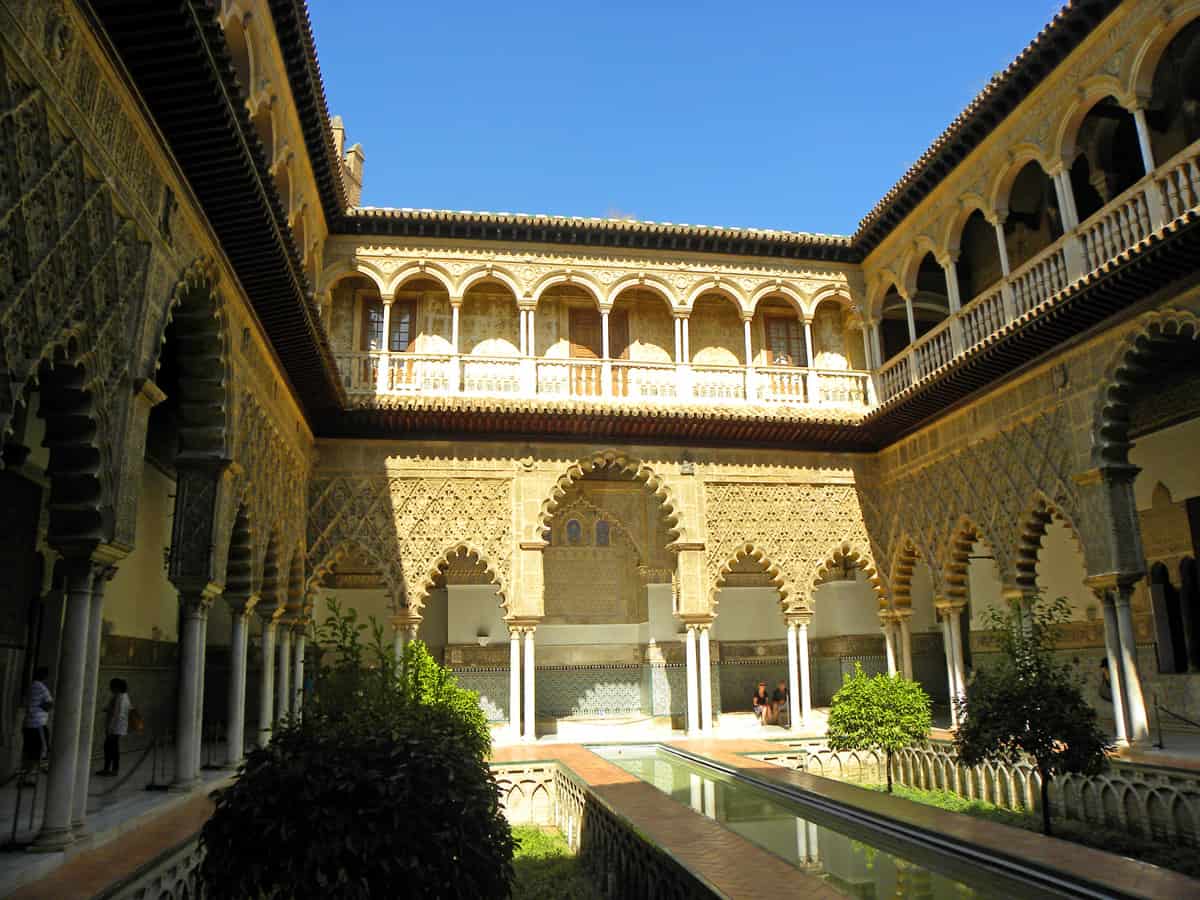
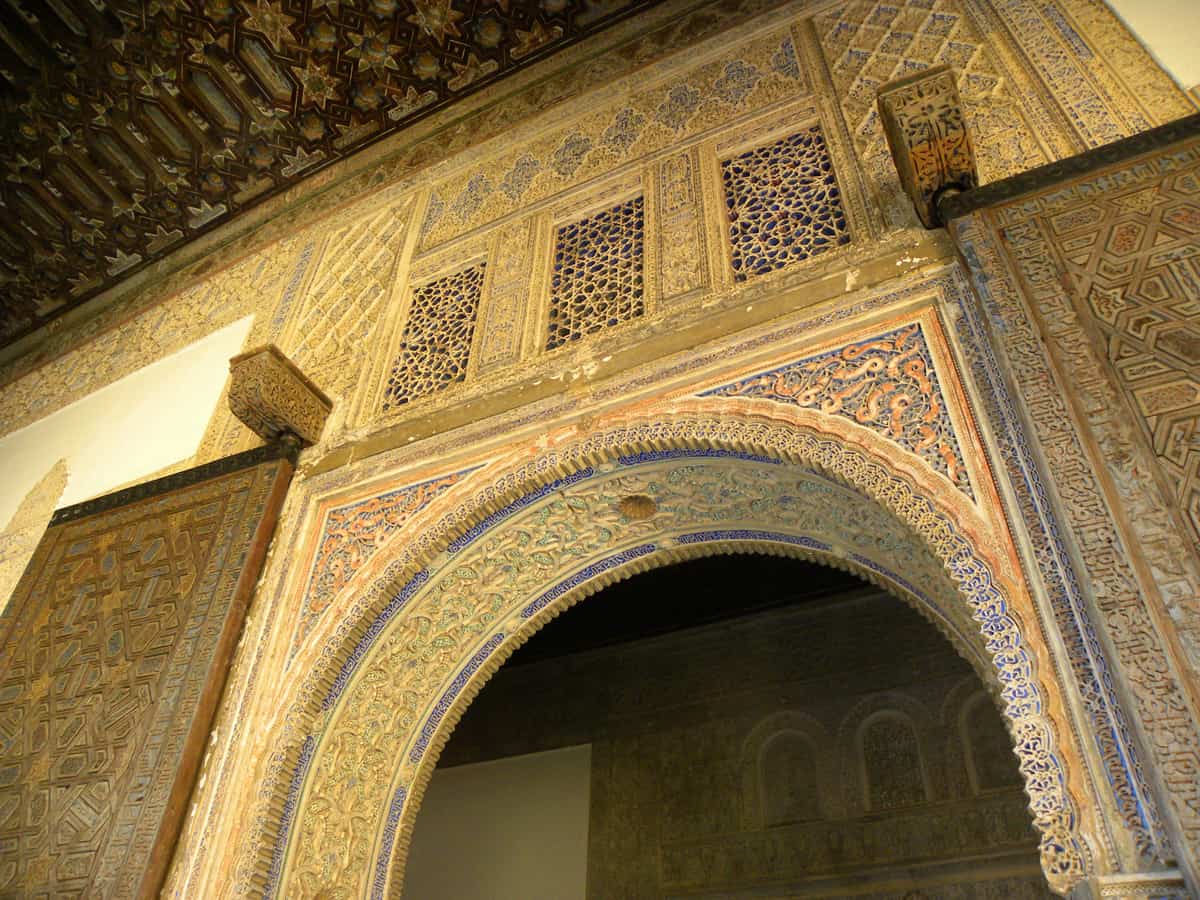
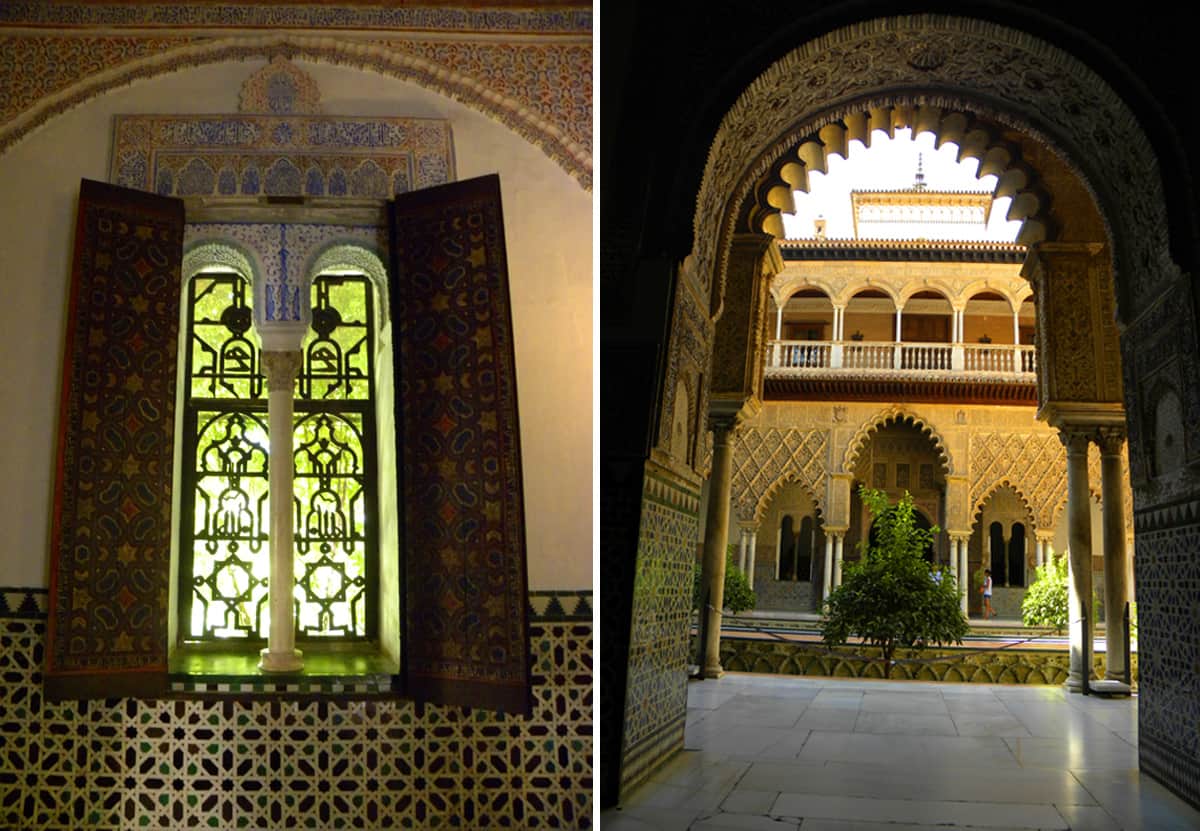
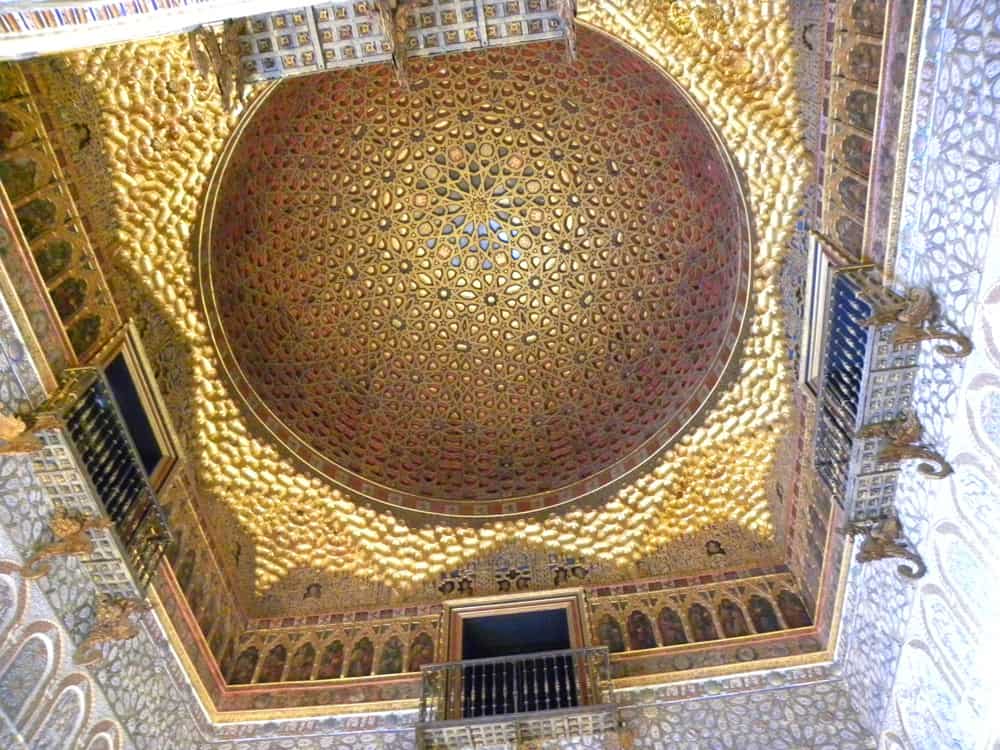

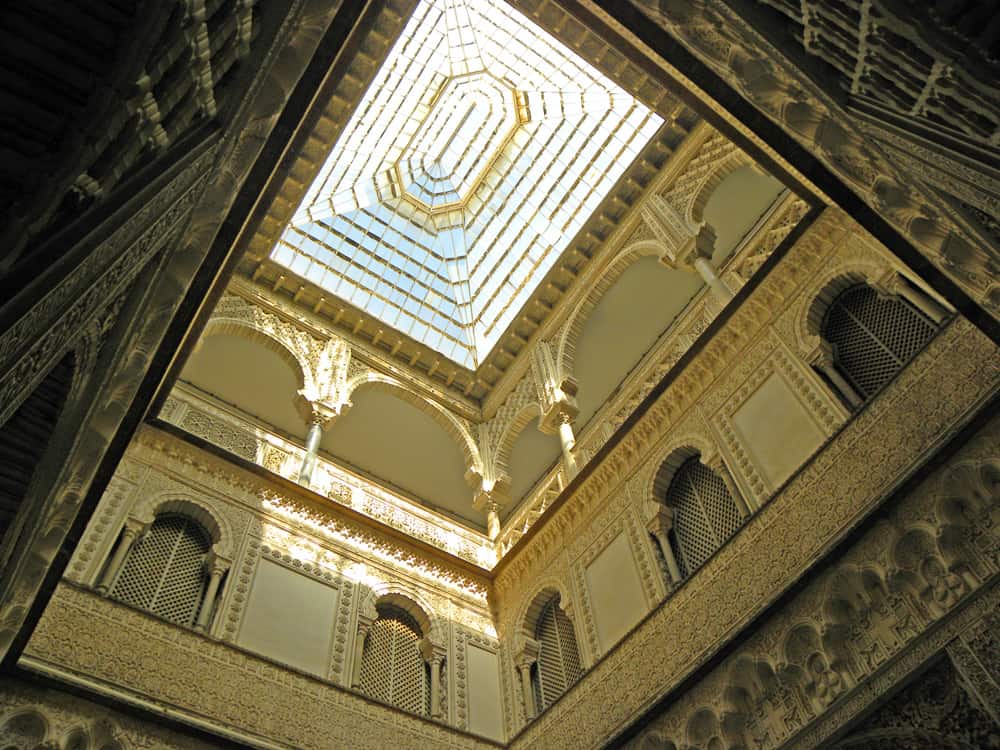
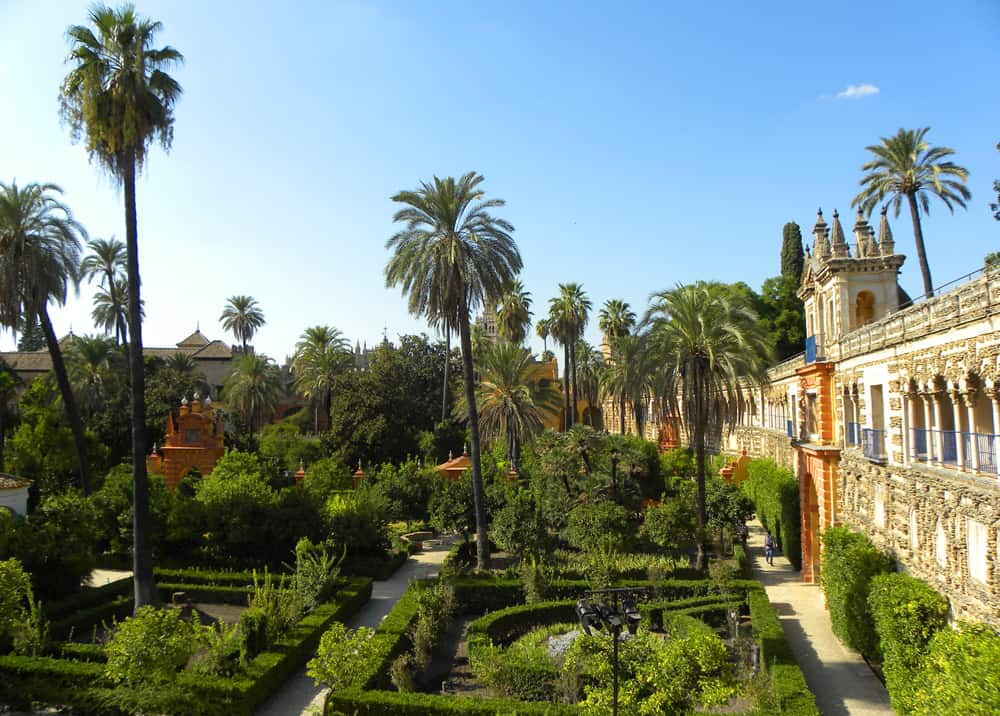
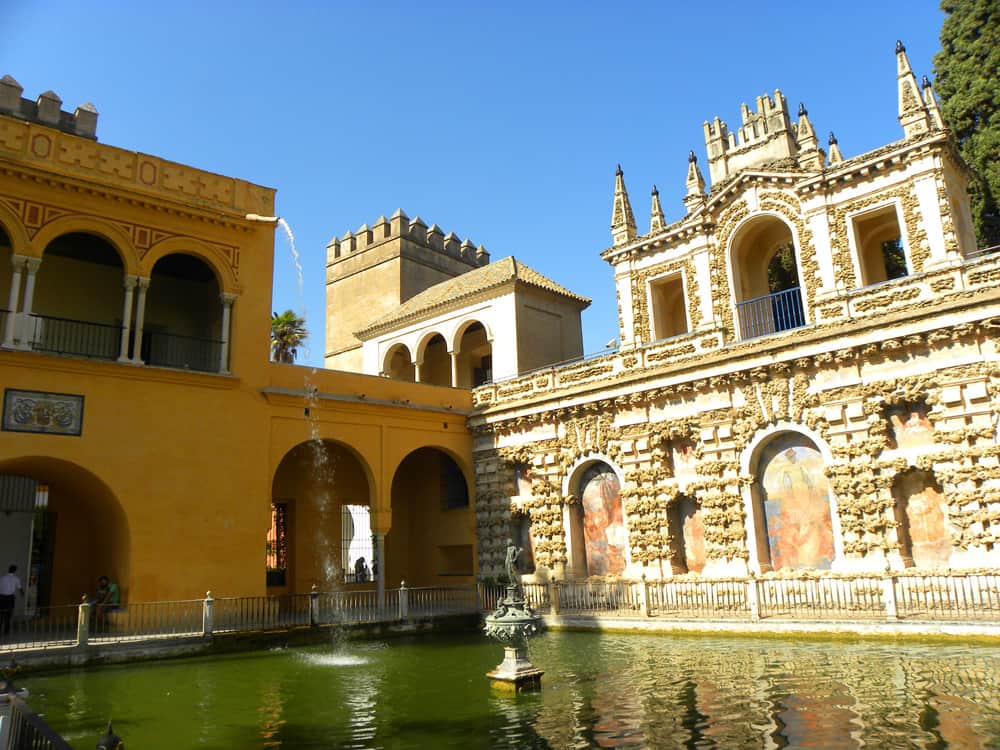
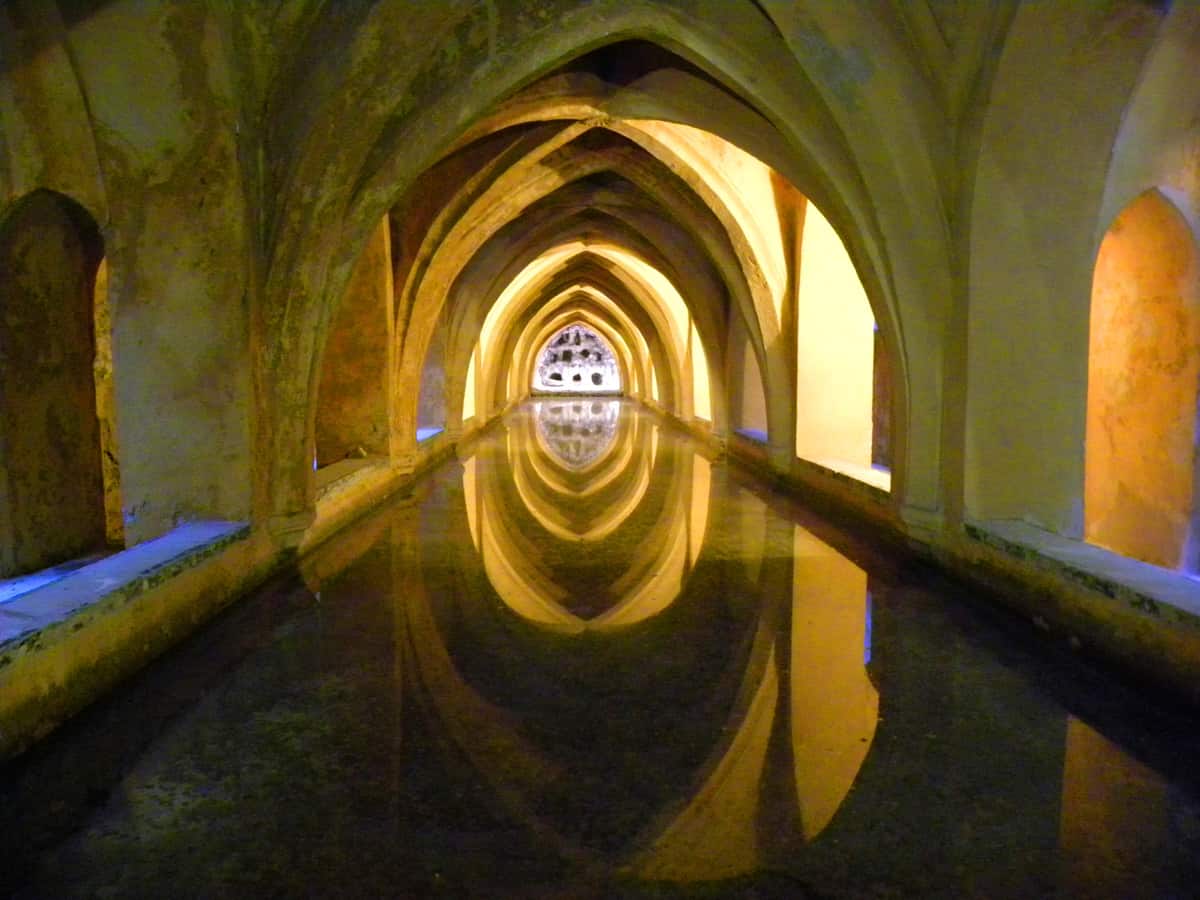

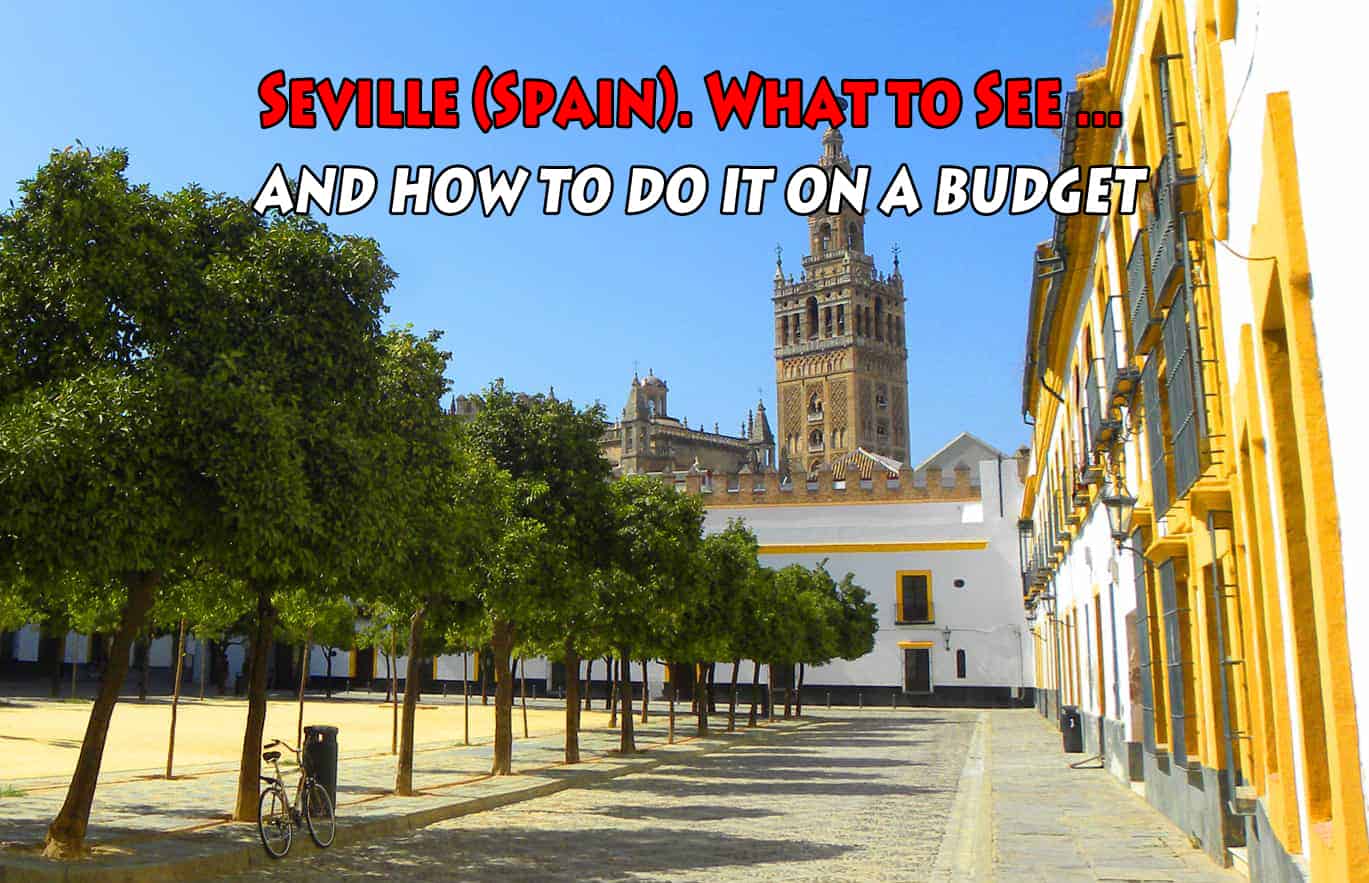

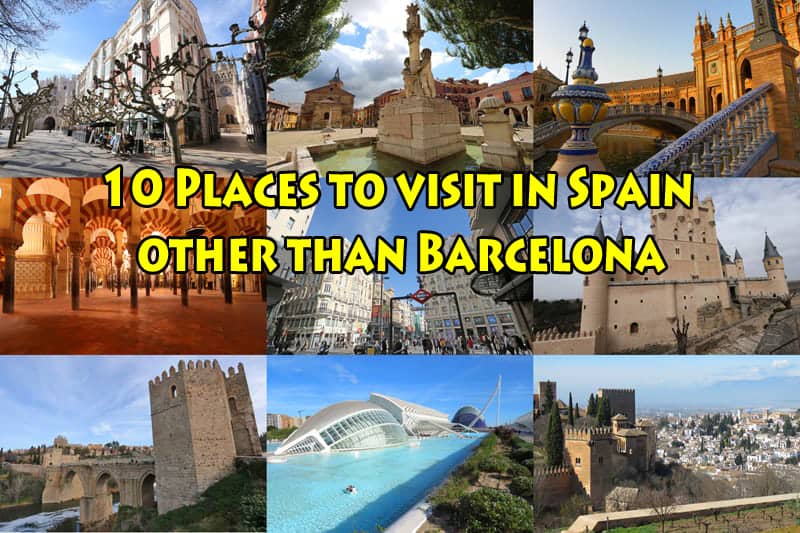
It is a great city. Home of Lissette’s favorite church: the Basilica de la Macarena.